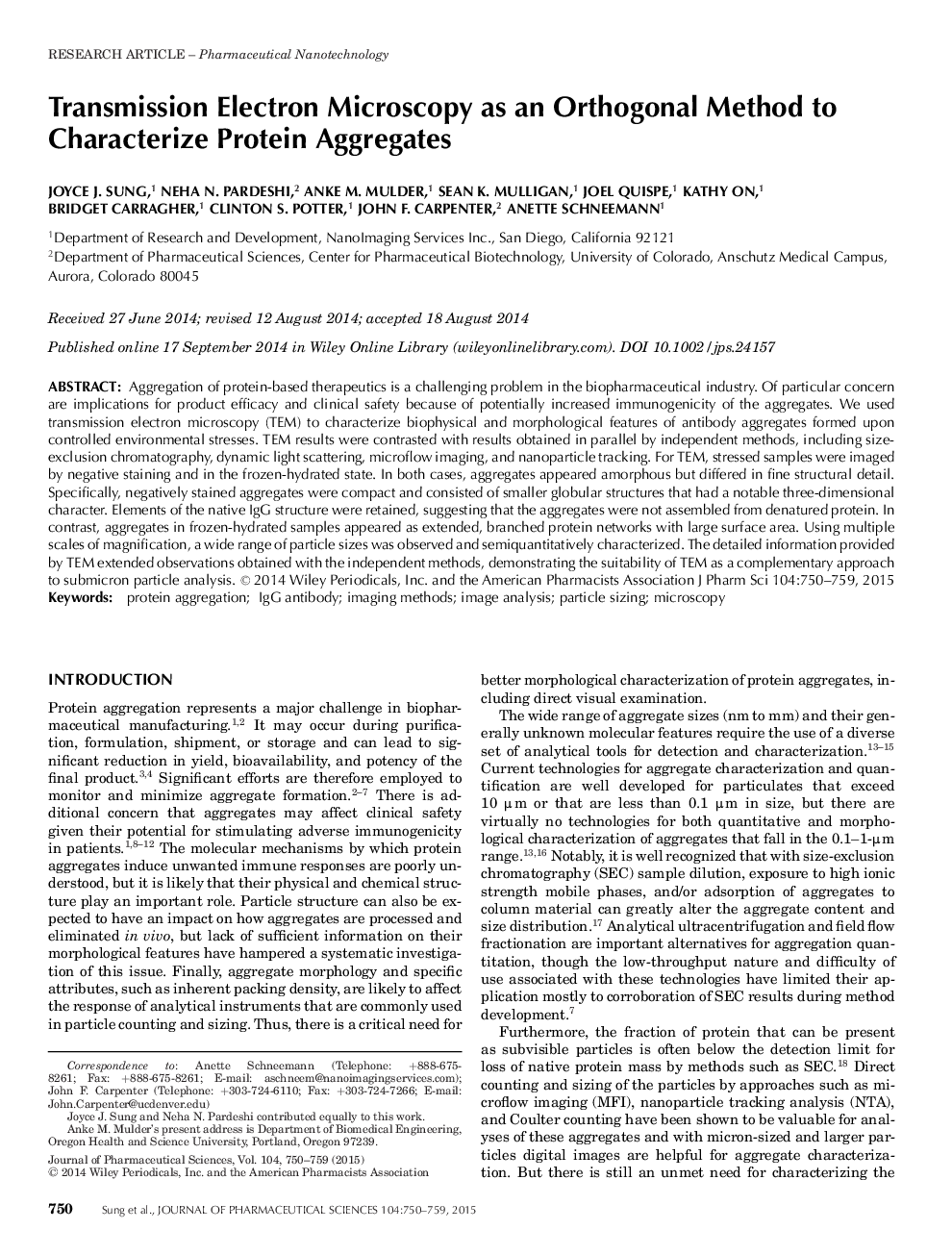| Article ID | Journal | Published Year | Pages | File Type |
|---|---|---|---|---|
| 10162198 | Journal of Pharmaceutical Sciences | 2015 | 10 Pages |
Abstract
Aggregation of protein-based therapeutics is a challenging problem in the biopharmaceutical industry. Of particular concern are implications for product efficacy and clinical safety because of potentially increased immunogenicity of the aggregates. We used transmission electron microscopy (TEM) to characterize biophysical and morphological features of antibody aggregates formed upon controlled environmental stresses. TEM results were contrasted with results obtained in parallel by independent methods, including size-exclusion chromatography, dynamic light scattering, microflow imaging, and nanoparticle tracking. For TEM, stressed samples were imaged by negative staining and in the frozen-hydrated state. In both cases, aggregates appeared amorphous but differed in fine structural detail. Specifically, negatively stained aggregates were compact and consisted of smaller globular structures that had a notable three-dimensional character. Elements of the native IgG structure were retained, suggesting that the aggregates were not assembled from denatured protein. In contrast, aggregates in frozen-hydrated samples appeared as extended, branched protein networks with large surface area. Using multiple scales of magnification, a wide range of particle sizes was observed and semiquantitatively characterized. The detailed information provided by TEM extended observations obtained with the independent methods, demonstrating the suitability of TEM as a complementary approach to submicron particle analysis.
Related Topics
Health Sciences
Pharmacology, Toxicology and Pharmaceutical Science
Drug Discovery
Authors
Joyce J. Sung, Neha N. Pardeshi, Anke M. Mulder, Sean K. Mulligan, Joel Quispe, Kathy On, Bridget Carragher, Clinton S. Potter, John F. Carpenter, Anette Schneemann,
